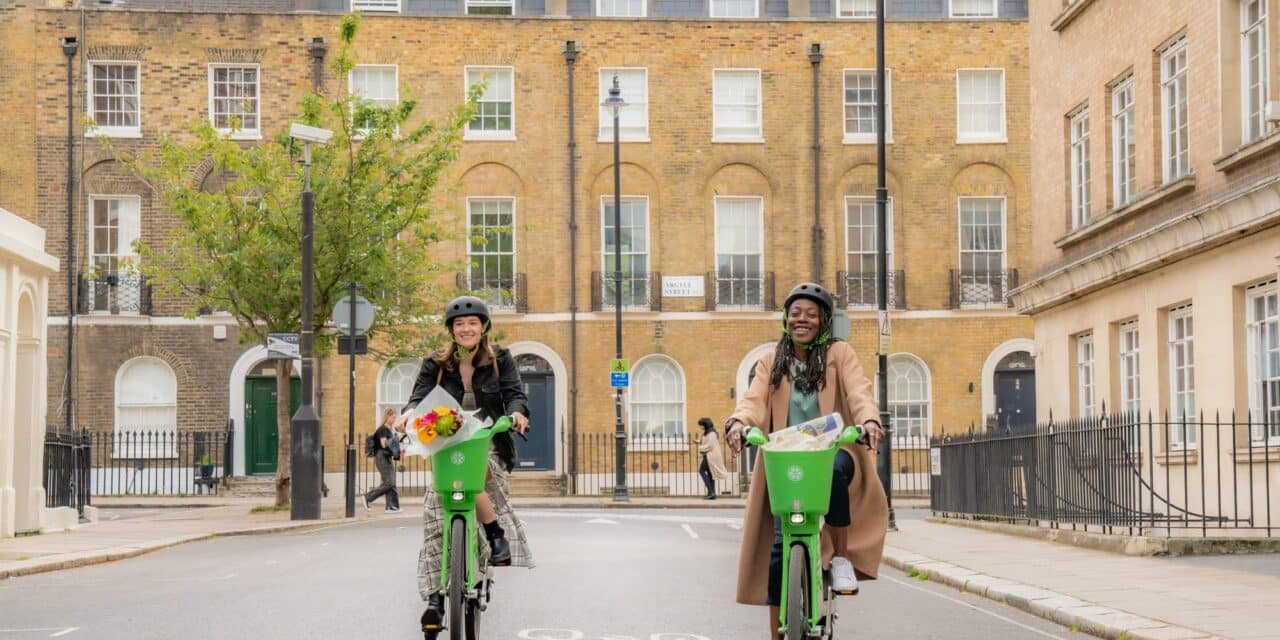Much more than convenience and accessibility, the findings will delight Londoners across the city.
Steer, transport consultancy, released an independent report that calls for the creation of over 10,000 e-bike parking bay locations in London by 2025 to meet growing demand for shared and green transport as TfL and London Councils plan for London-wide e-bike regulation.
The report highlights how Lime’s industry-leading e-bike service supports London’s wider transport network through analysis of our operator’s service data and rider survey data, to help inform future recommendations for new London-wide e-bike regulation. It reveals new figures into the growth of Lime’s service in London in recent years, with more than 1.25 million London Lime riders having taken more than 12 million e-bike trips between Jan 2019 and March 2023. In this time Lime usage has increased by an average of 10% each month, delivering record growth in the capital.
As a result of more people choosing this mode, Lime trips have prevented 1 million motor vehicle trips in London, replacing an estimated 2.6 million car/taxi kms-traveled and approximately 370 tonnes of CO2 and 48kgs of particulate matter (PM2.5) savings.
This is what Steer discovered…
Lime’s service increases accessibility and connectivity in London
Steer’s analysis found Lime’s e-bike service improves accessibility and connectivity for Londoners. Key data points include:
40% of Lime e-bikes are available in areas with lower public transport availability, helping improve access to transport for residents
50% of Lime e-bikes are available in in areas with higher levels of deprivation (IoMD Level 0-4), helping reduce transport disparity
97% of the population within Lime’s service area are usually within a two minute walk of a Lime bike. Around 7% of Londoners live within the same distance to tube and rail stations, with Lime’s service helping people connect to local public transport hubs
Lime’s program supports London’s active travel goals
Evidence from the report also highlights how Lime e-bikes help to support policy goals, including London Mayor’s ambition for 80% of trips in London to be made by walking, cycling or public transport by 2041. The service plays a role in getting more people cycling. Three in five (60%) Lime riders either cycle more often since using Lime e-bikes. In particular, 71% of female riders were not regular cyclists before using Lime e-bikes compared to 52% male riders. Lime’s service also contributes to greater use of London’s bike lane network, with almost 70% of Lime riders using bike lanes for a part of their trip or the whole trip.
Recommendations for London-wide e-bike regulation
While the report finds strong evidence for the benefits of shared e-bike services, it concludes that new regulation is needed in the context of record demand. Currently, insufficient parking capacity and disparate regulations between Boroughs remain barriers to further growth and create issues for users and non-users alike.
The report supports TfL and London Councils’ ongoing plans for a new London-wide regulatory approach to e-bikes and provides five key recommendations to inform the new framework:
- Introduce a London-wide shared e-bike service with a standardised service area and consistent parking and riding rules, including designated parking – A patchwork of regulations and service areas holds back further bicycling: 27% of Lime users would cycle more if Lime had a larger, more standardised service area.
- Provide a high density of designated parking locations to ensure strong usage, maintain convenience, as well as ensure safe and tidy parking – 50% of Lime users responded they wanted to park within a 200 m walk of their destination. The report recommends 25 parking locations will be needed per square kilometer, equating to more than 10,000 new parking locations across London. This finding echoes earlier Lime analysis showing that 20-30 parking locations per square kilometer is the threshold to maximize parking compliance.
- Parking locations should be chosen using operator data, and approximately £20m investment should be allocated to funding their creation by 2025 – This investment should be split between shared e-bike operators and local authorities.
- In the interim, shared e-bike providers should introduce time- and location-specific in-app rider education features – These interventions should alert users when they cross a borough boundary or enter an area with new parking rules. Previous research from the University of Oregon and Cornell University has shown that rider education can improve parking compliance.
- Shared e-bike providers should provide regular data on usage patterns on cycling infrastructure to inform where further infrastructure could be implemented – The City of London has made unprecedented investments in bicycle infrastructure, but a lack of safe places to ride continues to hinder further uptake: 33% of Lime users would cycle more if more bike lanes were provided.
These recommendations will ensure shared e-bike services remain convenient for users whilst providing safe and convenient places to park London-wide, preventing pavement obstructions and access issues.
View the report here.
by Calvin Thigpen – DIRECTOR OF POLICY RESEARCH AT LIME















